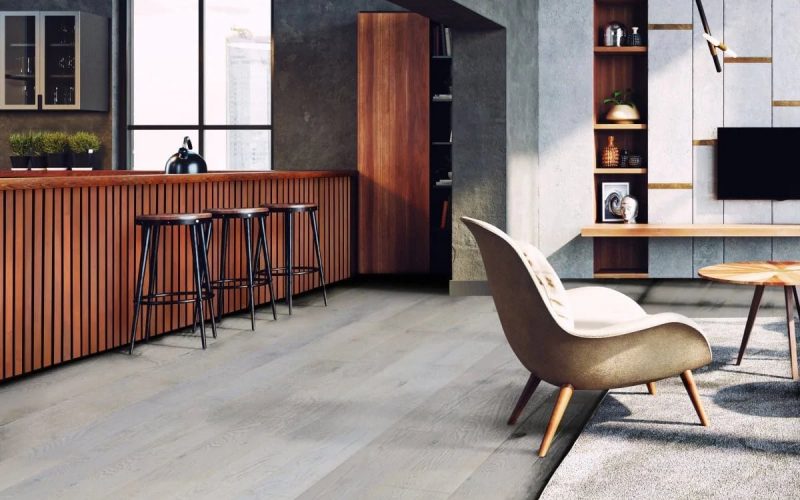
Acoustic Wall Panel
Acoustic wall panels reduce noise and clear speech. They are available in a wide range of models, colors and materials. The fabric you choose should be breathable and not backed; you can test this by blowing air through it.
These fabric-wrapped boards improve sound quality by absorbing problem frequencies. Music studios use them to control reverberations and polish sounds. You can also find them in theatres and concert halls, using acoustic panels suspended at various heights to diffuse sound.
Cost
If you are looking for a way to improve your space’s sound quality, acoustic wall panels may be the solution. These panels absorb sounds, reduce general noise, clarify speech and limit reverberation in walls within enclosed spaces. They are available in a wide range of shapes and sizes, so you can find the perfect fit for your room. They are also a cost-effective way to make your home or office more comfortable and productive.
There are several different types of acoustic wall panels, each with its own unique characteristics. One type is a mineral wool panel, which is made from rock wool and is effective in absorbing low-frequency sounds. Another is a recycled cotton panel, which is bonded to create an acoustic fabric and can be painted. Other options include BlocknZorbe, which is an acoustical fiberglass panel that is water-resistant and durable, as well as Ecoverb, which is a budget-friendly cotton fiber panel.
The installation costs for acoustic walls vary, depending on the size and complexity of the project. In general, the cost of acoustic panels can be reduced by using Z-clips or other clips that allow the panel to be secured to the wall with minimal labor. Additionally, the cost can be reduced by using a contractor with a flexible schedule or by installing the panels during low demand periods for the vendor.
Durability
Acoustic wall panels are ideal for use in schools, gymnasiums, auditoriums and offices. They can also be used to reduce noise from train stations, restaurants and other loud spaces. They are available in a variety of colors and sizes, and can be easily Acustic Wall Panel tacked or screwed onto walls. Some even have a class B1 fire rating.
These panels work by reducing noise by absorbing sound waves, and can be mounted on walls, ceilings or windows. They can help reduce reverberation and vibrations, and they can also improve the clarity of speech and music. They are easy to install, and are a cost-effective way to enhance the look of any room.
Unlike other architectural acoustic solutions that have conspicuous holes, slots or grooves, Latus panels are designed to blend seamlessly into their surroundings. They are able to achieve this by integrating cutting-edge acoustic technology with simple installation procedures.
To mount acoustic panels, you can use impaling clips, which are flat on one side with sharp spikes on the other. You can also use construction adhesive to attach them to the wall. Make sure to apply a thin bead of clear silicone around the plate teeth and the edges of the panel. This will prevent them from pulling off the wall and exposing sharp impalement plates. This method is especially important if you have children or pets.
Installation
Acoustic wall panels are made of absorbent materials that reduce the amount of noise in a room. They can be used in a variety of settings, including home theaters, recording studios, classrooms, and office spaces. The material is also available in a variety of colors and styles, making it easy to match the look of your space.
Acoustical wall panels work by absorbing and diffusing sound frequencies in the room, reducing reverberations and echoes. This helps to eliminate noise pollution, which can have a negative effect on people’s health and well-being. Noise pollution can cause stress, sleep disturbance, and hearing loss. The reduction of noise pollution will help to improve the overall quality of a space and make it more productive, relaxing, and healthy.
The first step in installing acoustic panels is to sand the surface of the wall on which you will be mounting them. This will even the surface and prepare it for the adhesive bonding process. You should also wipe the area clean with isopropyl alcohol or denatured alcohol before you begin to prevent any contaminants from interfering with the adhesive.
The next step is to remove the paper liner from one of the adhesive squares on the back of the panel. Apply the squares to the wall and press firmly. It is important to apply pressure to the wall for 30 seconds, so that the panel adheres properly.
Alternatives
For the DIY-minded, there are plenty of options available for acoustic wall panels. One such option is the Acoustic Design Works Mondrian kit, which comes with a set of 48 by 24-inch panels that earn an NRC rating of 0.85. These are designed to absorb sound from mid-to-high frequencies Acustic Wall Panel and can be mounted using double-sided tape, tacks or pins, and adhesive spray. They can also be hung from ceilings, though for best results, bass traps should be used.
Another option is the Bubos acoustic panels, which are designed to look like wall art and earn an NRC rating of 0.9. These are more of a civilian choice, and they’re a good fit for living rooms, since they won’t work as well in recording studios where you need to kill standing waves between parallel walls. They’re also class B1 fire rated and can be mounted with a variety of adhesives, including EZ-stick, TubeTak, or FoamTak.
For the music-minded, ATS Acoustics makes acoustic panels that come in various shapes and sizes, including 3 by 2-foot vertical ones with prints of meditation stones in water and a photograph of a country road. They’re also available in different colors, and can be mounted with a variety of double-sided tapes and adhesive sprays. The company also offers acoustic wall kits that include a wide range of mounting options.
